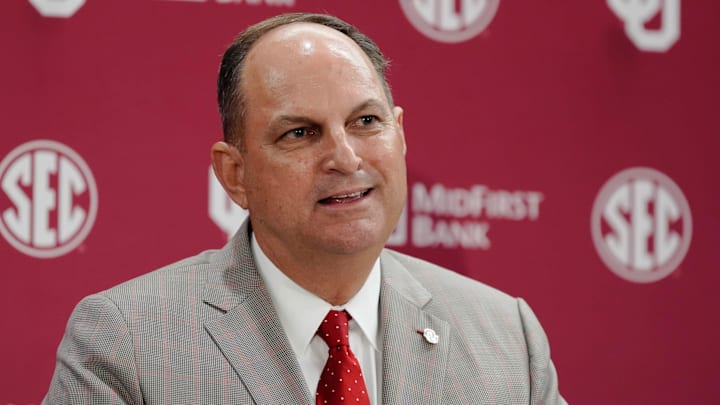It’s been a long time coming, but the House v. NCAA settlement was finally finalized Friday evening.
The House v. NCAA settlement officially killed amateurism in college sports and made it legal for universities to start directly paying student-athletes starting on July 1. Each NCAA Division I school will get an annual revenue-sharing payment of up to $20.5 million as the cap (for now). That cap will increase 4% each year during the current 10-year agreement.
Although the timing of the settlement was a surprise after it was pushed back multiple times, Oklahoma has been preparing for the altering changes for nearly a year now.
Sooners already made changes ahead of House v. NCAA settlement
First, OU athletic director Joe Castiglione has already publicly said the Sooners will pay the maximum $20.5 million in revenue share in order to stay nationally relevant and compete in the SEC. That large of a financial commitment requires preparation, though.
OU already laid off 5% of its 302 full-time, non-student employees in the athletic department to free up more money. The university will essentially gain hundreds of new employees overnight on July 1 because of the settlement.
All these new changes also require more manpower to handle and navigate, so while OU had to lay off employees, it also had to expand elsewhere. The first major addition was new football general manager Jim Nagy as the Sooners start to become ran more like an NFL front office.
Nagy has a reported deal worth $2.55 million over three years, starting with a salary of $750,000 in his first year. His staff has also rapidly grown from a one-man show after adding five people to OU’s front office staff since Nagy’s hiring.
Another change Nagy and head coach Brent Venables got ahead of was a new roster limit of 105, meaning about 20 less players based on average roster sizes before the settlement. According to CBS Sports, about 5,000 athlete across the NCAA's 43 sponsored sports are expected to be cut because of the new roster limits.
Venables started trimming his roster early. The Sooners lost 34 players to the transfer portal this offseason, but most losses were made to shrink the roster to reach the 105 mark while also having to add what they needed to improve. That’s where Nagy and his team are needed to scout and decide which players are worthy of OU’s now limited money and space.
Regardless, less than 24 hours after the House v. NCAA settlement was approved, there was already talk of even more changes in response, so OU will never truly be able to get fully out in front of everything in today’s ever-changing world of college sports. The Sooners, though, are at least ahead of the curve for now as college athletics start a new era.
Read more about Oklahoma Sooners
